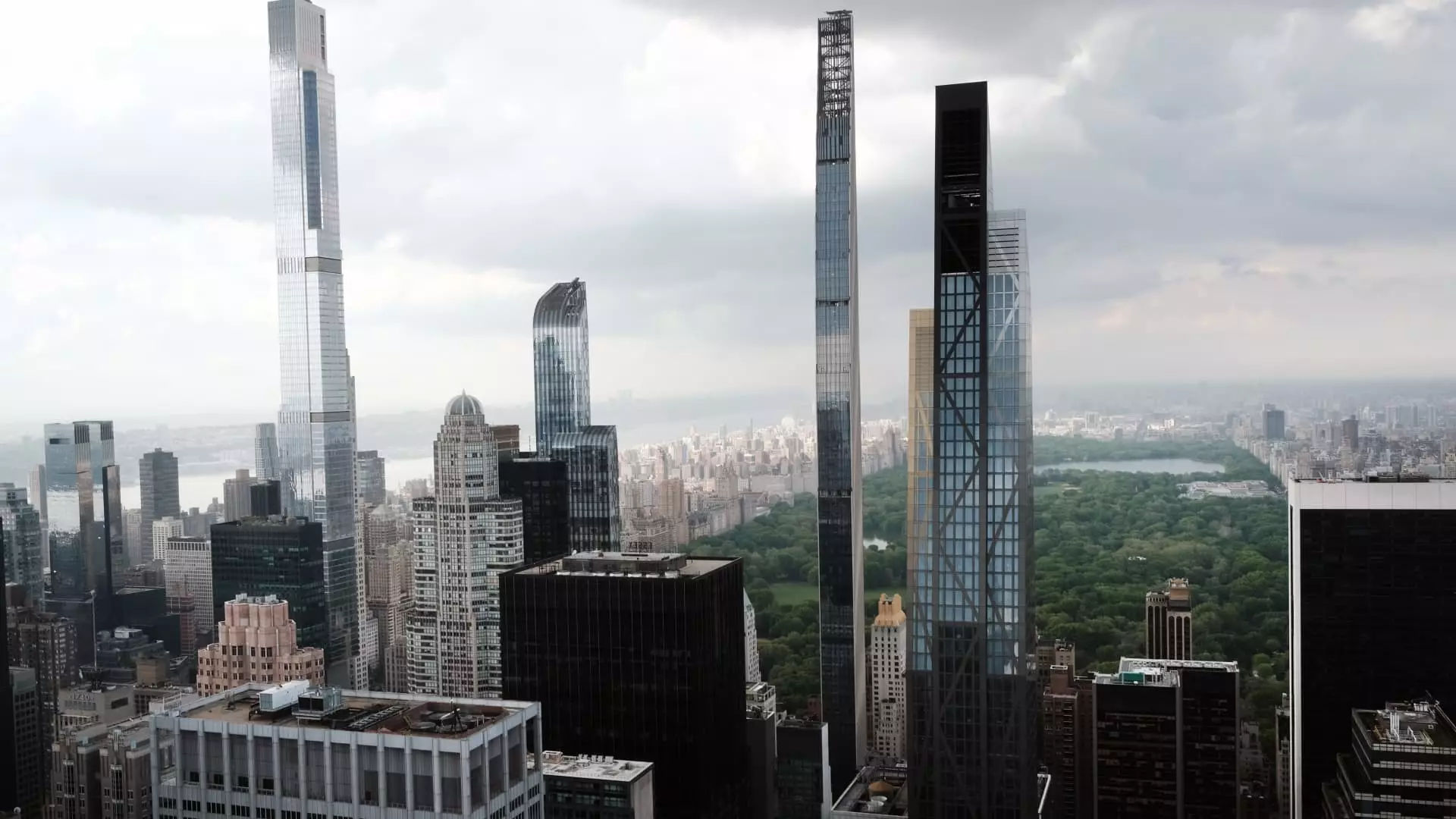Manhattan’s Rich Real Estate Goldmine: 29% Surge Fuels Luxury Market Confidence

Manhattan’s real estate sector has emerged as an unexpected victor in a tumultuous financial climate, experiencing a staggering 29% surge in apartment sales during the first quarter compared to the previous year. Amid stock market volatility, the city’s high-net-worth individuals appear to be seeking refuge in tangible assets, driving up sales and shaking off many of the uncertainties that linger over traditional investments. A recently released report by Miller Samuel and Douglas Elliman reveals an astounding 2,560 closed sales—up from 1,988 last year—with the total transaction value ballooning to $5.7 billion, marking a jaw-dropping increase of 56%.
The findings signal more than just a market rebound; they highlight a profound shift in strategy among affluent buyers who seem to find solace in luxury properties amid the chaos of inflated interest rates and declining stocks. Sales of apartments priced above $5 million have soared by 49%, while ultra-luxury properties fetching over $20 million achieved their best performance in the first quarter since 2019. With a staggering 58% of transactions involving all-cash offers, buyers are insulated from mortgage rates, fueling unwavering demand for high-end real estate.
Who’s Buying: The Wealthy and Their Strategies
The demographics of the current buyers exhibit distinct patterns influenced by the ebb and flow of financial markets. Transactions are largely led by cash-borne purchases, which significantly outpace financed sales. This trend reflects a generational wealth transfer, where the heirs of Baby Boomers, bolstered by trust funds and family offices, rearrange their portfolios to include prime Manhattan real estate assets. This phenomenon, dubbed the “great wealth transfer,” beckons a younger class of buyers who are not solely dependent on traditional income streams to make investments.
Real estate professionals emphasize that many among the ultra-wealthy are driven by strategic diversification rather than sheer desire. Homes have quickly turned into coveted legacy assets, with family offices eager to cement their financial foothold in Manhattan as a hedge against market instability. As Cindy Scholz of Compass articulates, this strategy enables long-term investment rather than short-lived impulsivity, showcasing an acumen that counters the risk-sensitive tendencies observed elsewhere in the market.
A Shift From the Mid-Market
While luxury sales flourish, the mid-market segment—comprised of properties priced between $1 million and $3 million—experiences a downturn. Signed contracts for these homes have dipped by 10%. This retreat indicates that financial pressures affect a more moderate stripe of buyers who might rely on standard financing pathways. Conversely, the more affordable segment priced between $500,000 and $1 million has shown resilience, suggesting that while the rich get richer, the middle class struggles to find stability in a rapidly shifting landscape.
The luxury market thrives largely insulated from significant macroeconomic drags, enabling affluent buyers to bypass the pitfalls that plague their less-privileged counterparts. Real estate agents suggest that institutions returning to in-person work compel a fresh wave of buyers back to Manhattan, invigorating an already strong luxury segment. The influx of individuals dubbed “boomerang wealthy,” returning to the city from pandemic-era retreats in states like Florida, further fuels this resurgence.
An Uncertain Outlook with Hidden Potential
Despite remarkable statistics, it is essential to dissect the long-term implications behind these trends. The data originates from sales negotiations often initiated months prior to closing, casting uncertainty on whether the current cycle remains sustainable. Jonathan Miller, CEO of Miller Samuel, points out that while the 29% increase is impressive, it barely nudges above the historical average over the last decade—only 1.1% more than expected.
As we look toward future quarters, the impressive signed contracts seen in March, particularly for apartments above $10 million—which tripled—could herald a remarkable shift ahead. If this momentum persists, we may witness a redefining moment in Manhattan’s real estate narrative, one where confidence continues to soar amid looming uncertainties.
The Bigger Picture: What Does This Mean for Manhattan?
The thriving luxury market is emblematic of a larger economic truth: high-net-worth individuals continue to adapt and respond intuitively to market rhythms. Manhattan, with its towering skyline and cultural allure, maintains its status as an enviable asset among the rich, largely undeterred by rising interest rates or stock market fluctuations.
What remains to be seen is whether this luxury boom can provide any real comfort or stability to the middle class, which finds itself increasingly squeezed. The stark divide in market performance suggests that while wealth may be sheltered in luxury real estate, the rest of Manhattan’s populace grapples with pressures that, if unchecked, could pose risks to the city’s well-being. For now, however, the luxury market shows no signs of slowing down, and Manhattan’s real estate allure persists unabated.





